It’s quite uncommon to find really old textiles and garments in New Zealand op-shops: anything older than the 1950s is quite exciting. And every once in a while I get very lucky, and find something quite exciting: even if it isn’t.
This nightgown really isn’t exciting as a garment per se: it’s plain, and shapeless, and certainly not romantic. But it’s exciting to find something so old here in NZ (especially since I only paid $4 for it), and even an un-exciting garment is exciting in the details it reveals about period construction techniques; carefully studying and copying the construction details can help to make a reproduction look like the real thing.
The gown is a little hard to date: you see pieces like this anywhere from the late 19th century, all the way to the 1940s. The materials in this one suggest that it’s probably from the 1910s or 20s, and was likely made by or for an older woman.
We know a little bit about the woman who used it: she monogrammed her initials on to it…
(cue middle school boy sniggers):
What else can we tell just from looking at a simple nightgown?
The fabric is very good quality cotton – long staple, and soft.
It’s trimmed with very narrow pintucks, machine-embroidered broderie anglaise, and a narrow ribbon with a foliate pattern. The pintucks on the back of the gown are significantly wider than those on the front.
Notice the stitches? They are tiny, but because they are sewn in cotton thread, they still show quite distinctly. Very small stitches are a extremely common on pre-1930s garments, and are one of the tiny touches that can really help to make an 1860s-1930s reproduction look ‘right’ – especially in cotton thread.
The gown fastens at the front with two mother-of-pearl buttons, and has a V-shaped neck front and back, with cut-on sleeves.
The monogram is worked in the proper left chest, above and to the side of the pintucks.
(Hehe.)

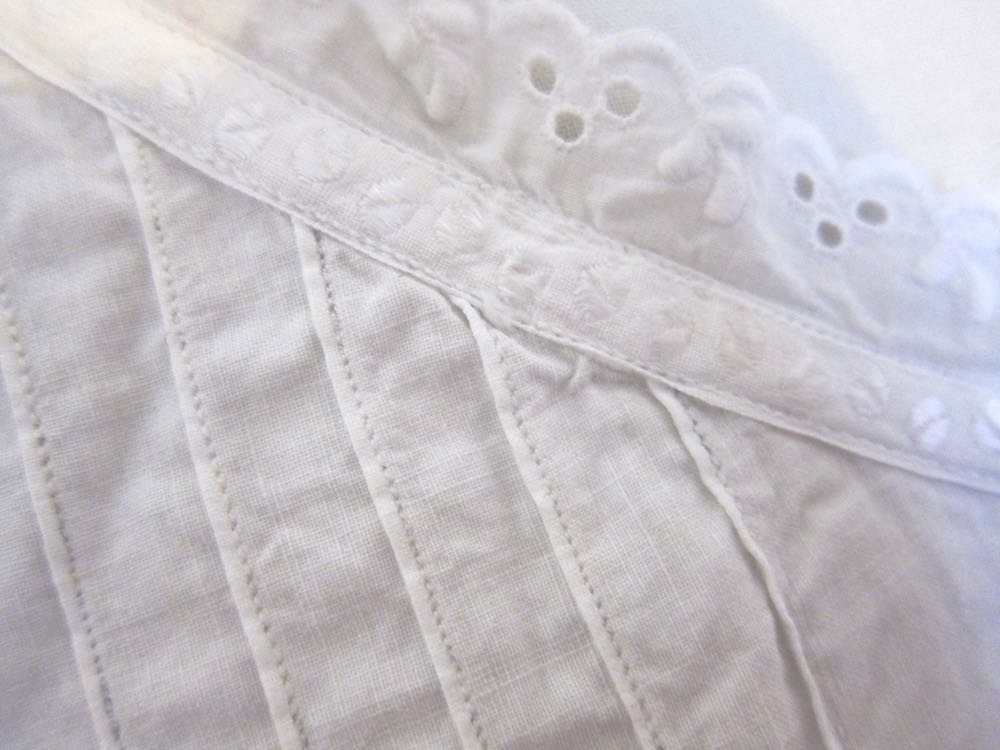

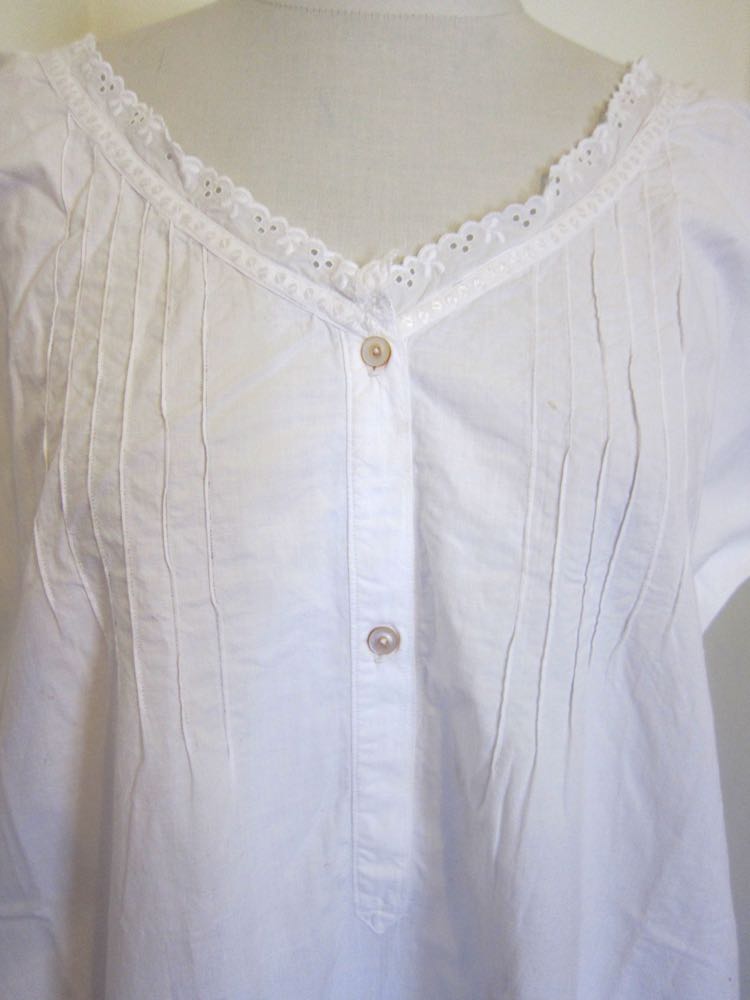
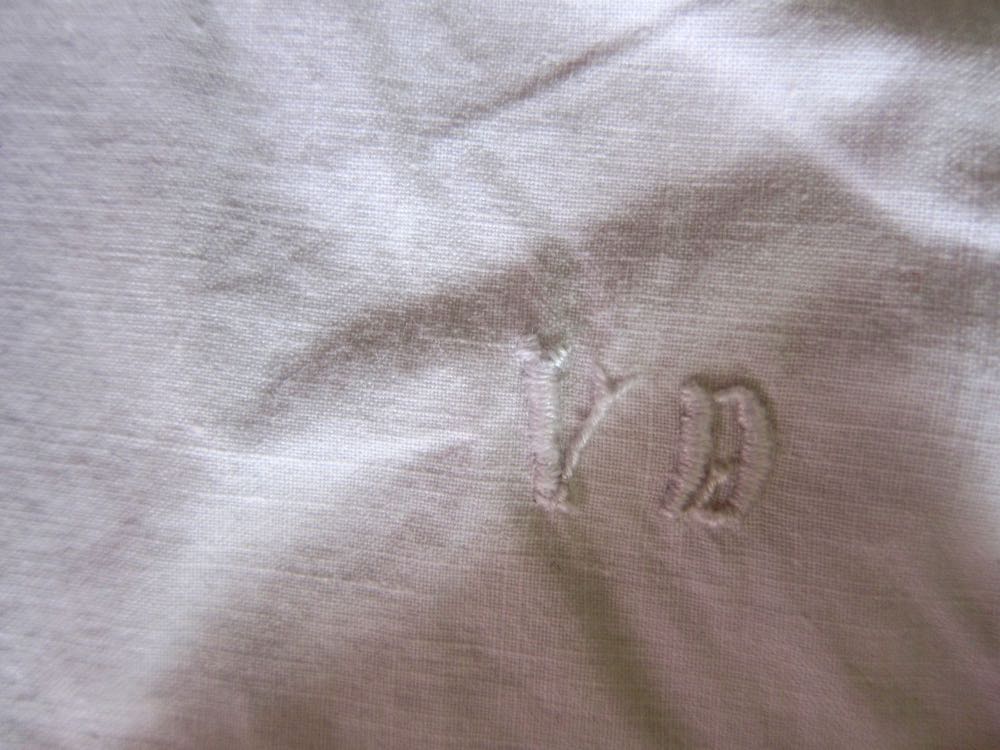
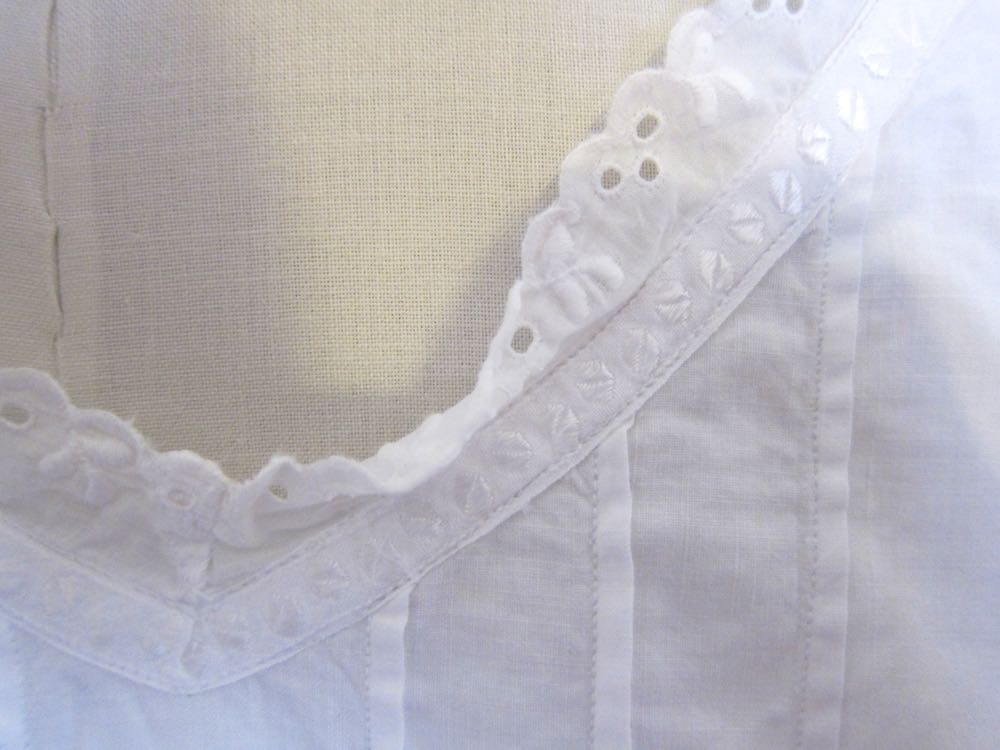
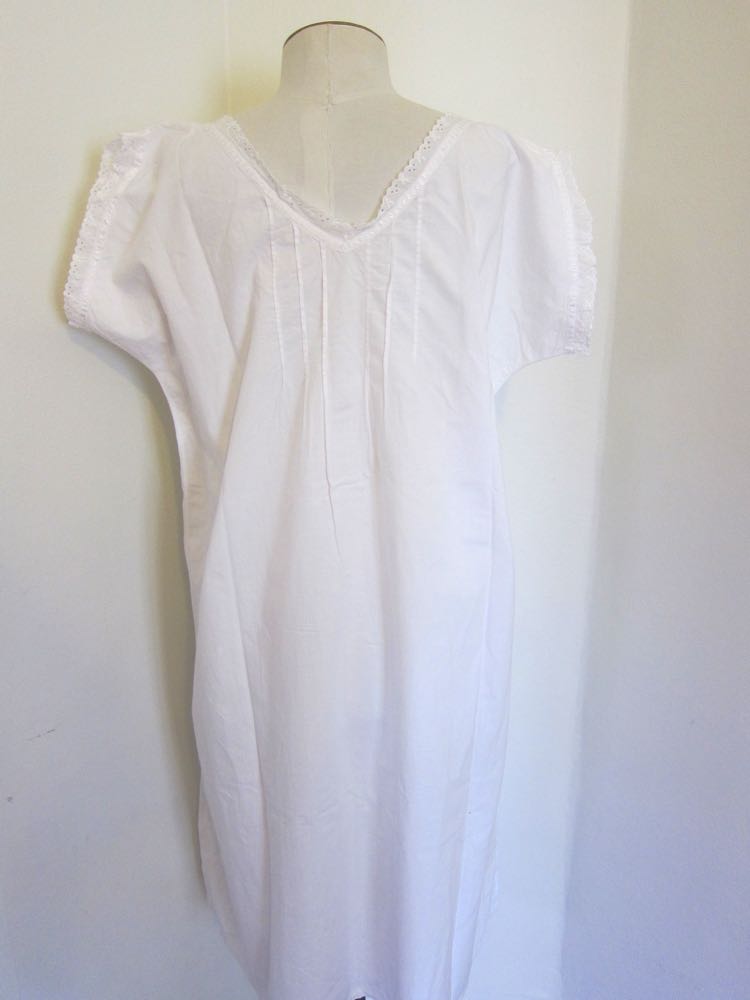
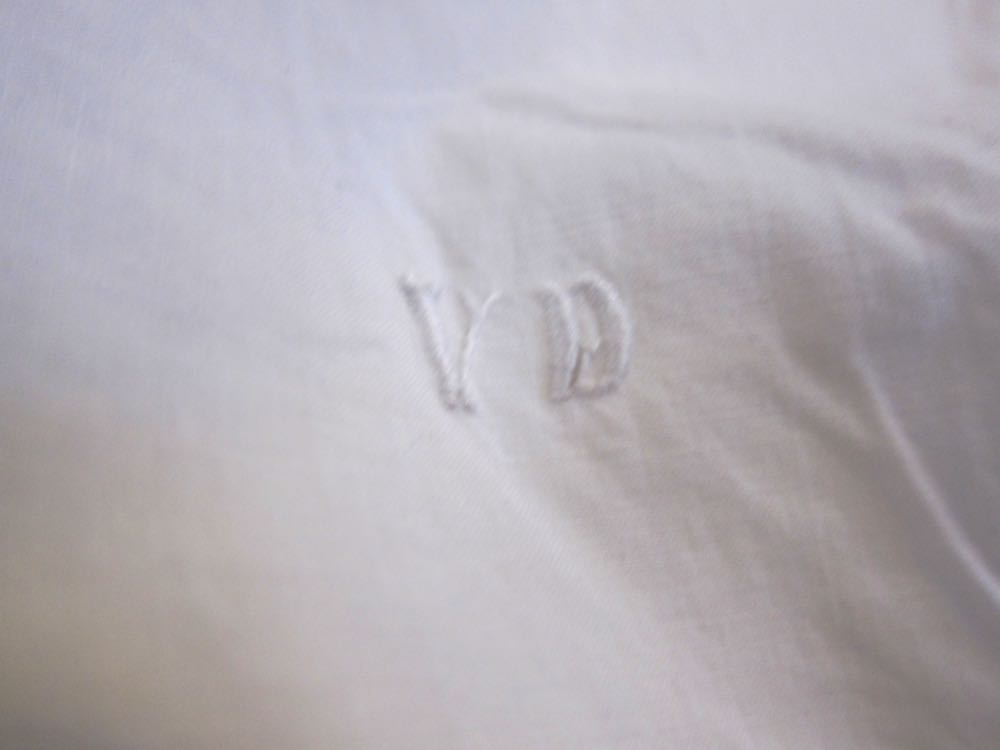
Lovely detail! Very simple, very summery. How do those sleeves/arm-holes look when it is being worn?
I haven’t actually tried it on!
May I ask how you figure it was made for an older person? Style? Fibre content? Something else?
I think it was made for an older person because the combination of silhouette and materials was never fashionable. It’s a blend of newer and older details and cut, which often indicates an older person accepting some innovations, but sticking with other things from their youth. I could definitely be wrong!
Nice find! Curious how the inside is finished.
Good point! I’ll take some photos. Mainly it’s very small french seams if I recall correctly.
I don’t understand – What’s wrong with the initials VN?
The initials are VD 😉 I have a number of 1910s/1920s monogram patterns, and that’s definitely a D, not an N.
Thanks! It could be Valentine’s Day
I had wondered the same!
Could that have been made as a project in a sewing class to finesse
the techniques?
It’s a sweet little number.